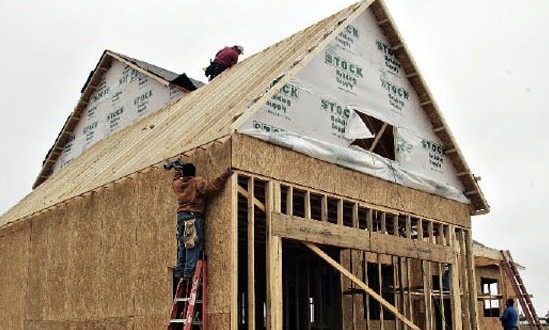The value of Canadian building permits shot up by 13.8 per cent in May from April, the fastest rate since July 2013, led by commercial buildings, and industrial and residential structures also registered substantial increases, Statistics Canada data indicated on Monday.
The increase in May, usually a positive month for permits, brought the value of total building permits to C$6.9 billion, although it remained 6.4% below the May 2013 level.
The May report – a leading indicator of construction activity – was stronger than the market consensus, especially considering the upward revision to the April estimate now at C$6.1 billion, a 2.2% increase from March, compared to an initial estimate of a 1.1% gain.
The May building permits report is one more indicator of stronger activity on top of higher inflation data, making it harder for the Bank of Canada to keep arguing that downside risks to inflation have not receded.
The strength in the report was widespread on a monthly basis, with the non-residential sector leading the advance with a 20.8% increase from April, the largest since July 2013, when permits rose 47.3%.
Construction intentions in commercial buildings led the advance with a “significant” 39.4% monthly gain, followed by the industrial sector (+22.4%). Construction intentions in the institutional sector, on the other hand, fell 16.6% from April.
Residential building permits rose 9.5% in May, marking a third consecutive increase.
Overall, “the total value of permits has been on a slight upward trend since the beginning of 2014,” the report said.
Looking at the number of units, total dwellings were up 11.8% in May from April, led by a 17.3% gain in multiple dwellings.
Permits increased in all provinces in May except Quebec and Nova Scotia.
Despite strong 12-month data, permits declined across the board on a 12-month basis, with the residential sector down 9.0% and non-residential down 2.3%.
The Bank of Canada is still expecting a soft landing in Canada’s housing market, although it continued to stress in its June Financial System Review that imbalances in the country’s housing market are one of four key vulnerabilities Canada’s financial system.
“Despite some signs of a soft landing, valuations are stretched and there are signs of overbuilding in certain segments of the housing market,” the central bank said.
Therefore, the BOC considers a sharp correction in housing prices as an “elevated” risk, although it is unchanged from its previous review six months earlier.
Besides, “In view of the expected strengthening of the global and Canadian economies, the probability of this risk materializing is low,” the BOC said.
Agencies/Canadajournal
 Canada Journal – News of the World Articles and videos to bring you the biggest Canadian news stories from across the country every day
Canada Journal – News of the World Articles and videos to bring you the biggest Canadian news stories from across the country every day



